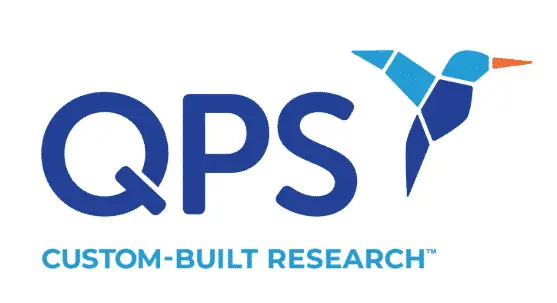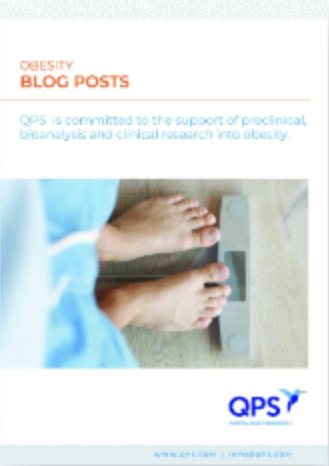Predictive, Diagnostic, and Pharmacodynamic Biomarkers
Tobacco products kill more than five million people each year. Up to half of regular tobacco users eventually die of a tobacco-related disease, making tobacco the leading preventable death worldwide. In the U.S., more than $200 billion per year is spent in smoking-related healthcare and other costs, including diminished worker productivity. Despite measures such as harm warnings and taxation over the past 50 years, smoking prevalence is still around 20 percent in the U.S. population. Of the one in five U.S. adults who smoke, 70 percent say they want to quit.
Drug therapies aimed at helping these aspiring quitters include bupropion, varenicline, and other nicotine replacement therapies (NRT). But these therapies only have a two- to three-fold success rate over a placebo. Only 15 to 20 percent of treatment-seeking smokers remain abstinent from tobacco products after one year. Better treatments are needed, but the development of safe, effective medications is difficult. Fewer than seven percent of the candidates for a central nervous system (CNS) drug in the past decade have reached the market.
One of the best potential ways to enhance drug development is through the identification of novel evaluative tools such as biomarkers. Biomarkers are characteristics that are objectively measured as indicators of normal biological processes, pathogenic processes, or biological responses to a therapeutic intervention. Biomarkers are well suited for high-risk translational areas involving mechanistically heterogeneous diseases — of which nicotine dependence is a prime example. Biomarkers are usually identified from a mechanistic understanding of the disease pathophysiology and observed correlations with a particular clinical outcome.

Development of Biomarkers for Smoking Cessation
The U.S. Food and Drug Administration has established a process for biomarker development and qualification within the Center for Drug Evaluation and Research. This process includes a framework for analytical validation, qualification, and utilization. The biomarker is qualified for a specific “context of use,” which is defined as a “comprehensive and clear statement that describes manner of use, interpretation, and the purpose of a biomarker in drug development.” It also includes a detailed description of its measurement, purpose, and application. It is important to note that the context of use both determines the evidence needed for qualifying a biomarker and delineates its application for future studies and drug development programs.
Three types of biomarkers have the most significant short-term translational impact for nicotine dependence.
- Diagnostic biomarkers are defined as a measure of an underlying physiological process as it relates to the course of a specific clinical outcome. A patient selection biomarker is used to identify or qualify key biological aspects of a disease and optimally stratify patient populations into the most appropriate phenotype for treatment. No therapeutic intervention is involved, and diagnostic biomarkers can be identified both prospectively and retrospectively. An example of a diagnostic biomarker for smoking cessation is a measure of carbon monoxide in exhaled air.
- Pharmacodynamic biomarkers are “response indicators” for pharmacotherapy, and are used to assess potential dosing in vivo. If there were strong modulation of the target by the pharmacotherapy, there would be a noted association with the clinical outcome, probably due to the drug interacting with its biologically intended target. A pharmacodynamic biomarker of smoking cessation would be used to define a clear qualitative physiological drug response.
- Predictive biomarkers can be used to identify patients who are likely to respond to therapy. Predictive biomarkers correlate the response to a particular intervention, positive (efficacy) and/or negative (safety/toxicity), with a clinical outcome before administration of the intervention. One example with regard to smoking cessation is the nicotine metabolic ratio and its relation to predicted quit success with transdermal NRT therapy.
Biomarkers of smoking cessation considered here are those that may be useful to the development of drugs as aids to smoking cessation and that are delineated across a range of methodologies, including metabolism, neuroimaging, and genetics. Additionally, although more than 4,000 compounds are created when a cigarette is burned, nicotine is the one that is widely considered to be the most addictive. Thus, while other chemicals should be considered for study, this blog only addresses nicotine.
Diagnostic Biomarkers
Nicotine Metabolic Ratio (NMR) as a Diagnostic Biomarker
Smoking behaviors have substantial variability, and these variances can be partially attributable to heritable differences in clearance rates of nicotine. Nicotine is metabolized by the hepatic enzyme CYP2A6. The gene that codes this enzyme is highly polymorphic, which results in a large variation in rates of nicotine metabolic clearance. Genetically slow clearers are less likely to be smokers, and those who are smokers consume fewer cigarettes. This slow-metabolizer genotype is often found among shorter-duration smokers, former smokers, or those who respond to placebo or patch treatment.
Large-Scale, Brain-Network Interactions as Diagnostic Biomarkers
Assessment of functional magnetic resonance imaging (fMRI) signals in the absence of a task reveals patterns of coherent, low-frequency spontaneous fluctuations that could clearly indicate underlying pathophysiological changes of a substance use disorder such as nicotine dependence. Although used to investigate a wide range of psychiatric disorders, resting state functional connectivity is increasingly being used to assess nicotine dependence and its possible applications to smoking cessation treatment. For example, it has been demonstrated that anterior cingulate cortex-ventral striatal functional connectivity strength is negatively correlated with nicotine usage and is unaltered by acute NRT.
A model-based approach has been proposed for the use of resting-state functional connectivity in the brain. This model incorporates interactions between large-scale networks and alterations in the addiction trajectory and might serve as a diagnostic biomarker of addiction. The model focuses on the interoceptive monitoring role of the insula, which is thought to direct attention toward either internal or external stimuli by mediating dynamic activity between two large-scale brain networks, the default mode network and the executive control network.
During nicotine abstinence, the insula may track withdrawal-induced bodily sensations (e.g., cravings) and, in turn, direct attention toward those cravings via increased interactions with the default-mode network. This resting-state functional connectivity circuitry model warrants further empirical testing and validation.
Pharmacodynamic Biomarkers
Pharmacogenomics
Twin studies have indicated genetic contributions to an individual’s ability to quit smoking. Genome-wide association studies for smoking cessation have identified several genes that play roles in smoking cessation — including those that encode cell adhesion molecule cadherin 13.
Genome-wide association studies for smoking-cessation clinical trials using 500,000 to 1 million single-nucleotide polymorphism (SNP) markers have provided groups of clustered SNPs that display 10−2 > P > 10−8 differences between successful and unsuccessful quitters treated with either NRT or bupropion. This data has been used to calculate a “v1.0 quit success score.” This marker has been found to predict quit success in two independent, prospective, double-blind clinical trials.
An NRT-induced reduction in smoking (as measured by a reduction in exhaled carbon monoxide concentration) before a targeted quit date also provides robust ability to predict quit success that is not well captured by the v1.0 quit success score. When combined with the v1.0 quit success score, the pre-cessation smoking reduction associated with a higher rate of short-term smoking abstinence provides a more robust “biosignature,” or combination of biomarkers. Together, this combination of physiological and genetic biomarkers provides an example by which two distinct biomarkers can lead to enhanced clinical predictive validity.
Predictive Biomarkers
Acute Prequit Reductions in Smoking Cue Brain Reactivity as Predictive Biomarkers
Although it has become increasingly understood that drug dependence is a CNS disease of dysregulated learning and memory, the modifications that have occurred to learning and memory as a consequence of addiction remain poorly understood. Relatively few studies have used neuroimaging as a potential biomarker. These studies have mostly focused on imaging as a predictive marker for smoking cessation — and have provided evidence that neuroimaging may be useful in this case. For example, acute pre-quit reductions in smoking-cue reactivity within the thalamus and ventral striatum are associated with improved cessation outcomes.
Some studies have focused on behavioral/pharmacological manipulations; for example, pharmacological or behavioral interventions on brain reactivity to smoking cues. These studies have shown that interventions with putative effects on reactivity to smoking cues decreased brain responses. This suggests that changes in brain cue reactivity, particularly in ventromedial structures, may serve as a possible pharmacodynamic biomarker and could be used to define a clear, qualitative drug response.
Nicotine Metabolic Ratio as a Predictive Biomarker
NMR has been used in several clinical trials as a genetically informed marker of CYP2A6 activity. It has been validated as a predictor of quit success in an independent sample of more than 500 smokers after eight weeks of transdermal nicotine treatment. NMR was a better predictor of quitting than number of cigarettes per day, the Fägerstrom Test for Nicotine Dependence, or baseline measured cotinine. In another test, fast metabolizers had a significantly lower quit rate than slow metabolizers. These tests suggest that slow metabolizers, as defined by NMR, have greater success with transdermal nicotine, nicotine gum, or counseling only, but fast metabolizers would not be good candidates for these treatments — bupropion could be more efficacious.
The Future of Smoking Cessation Treatment
The majority of smokers want to quit, but many have been unable to find success with the existing therapeutic options. More treatments are needed, and the pharmaceuticals that are already available need to be improved. As a drug development tool, biomarkers hold significant promise. Diagnostic biomarkers for patient selection, pharmacodynamic biomarkers for optimal dosing, and predictive biomarkers for selecting patients likely to respond to therapy all represent crucial first steps toward the more efficient development of therapeutic interventions.
Since 1995, QPS has provided discovery, preclinical and clinical drug development services. An award-winning leader focused on bioanalytics and clinical trials, QPS is known for proven quality standards, technical expertise, a flexible approach to research, client satisfaction, and turnkey laboratories and facilities. For more information, visit www.qps.com or email info@qps.com.







